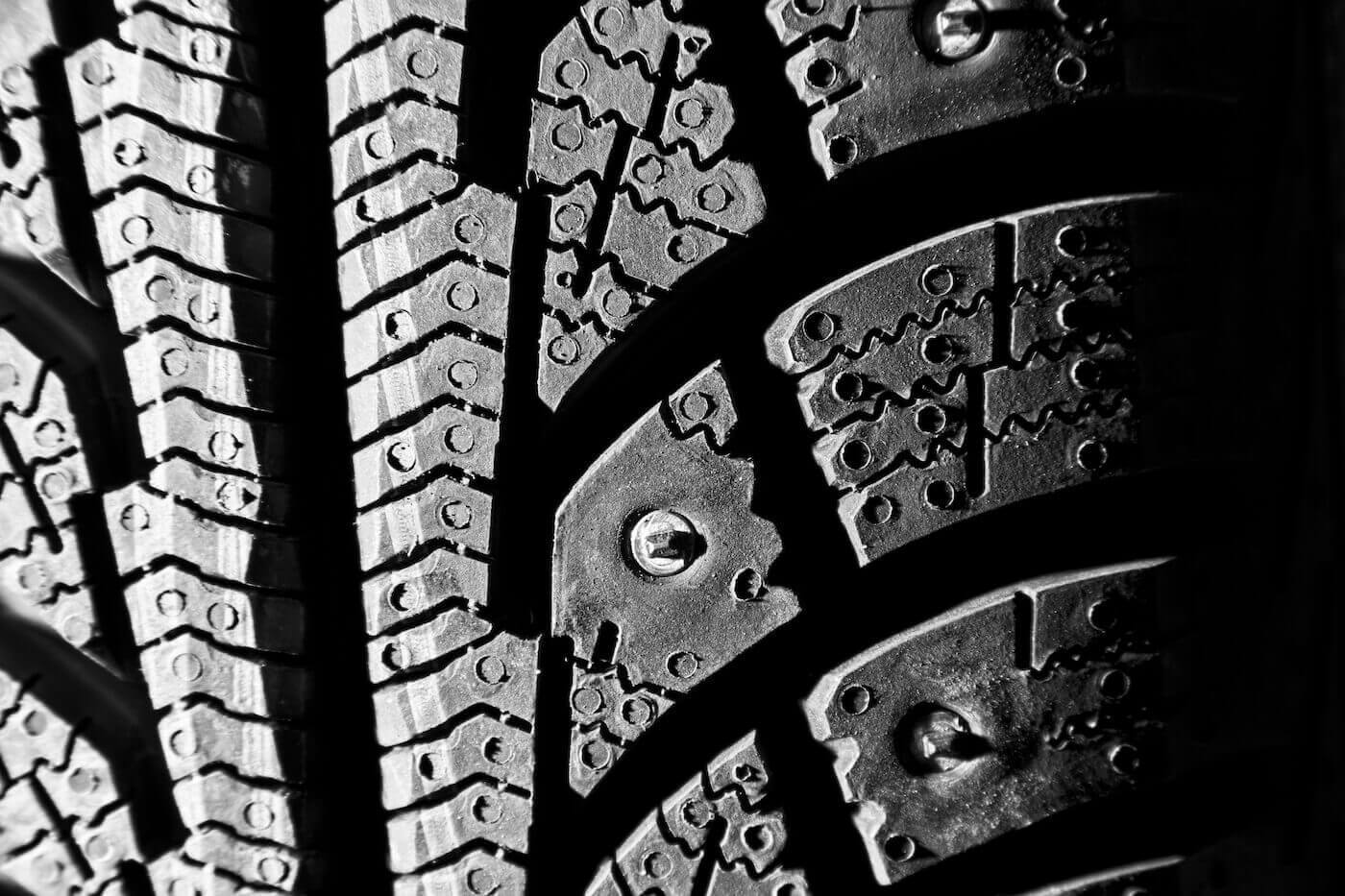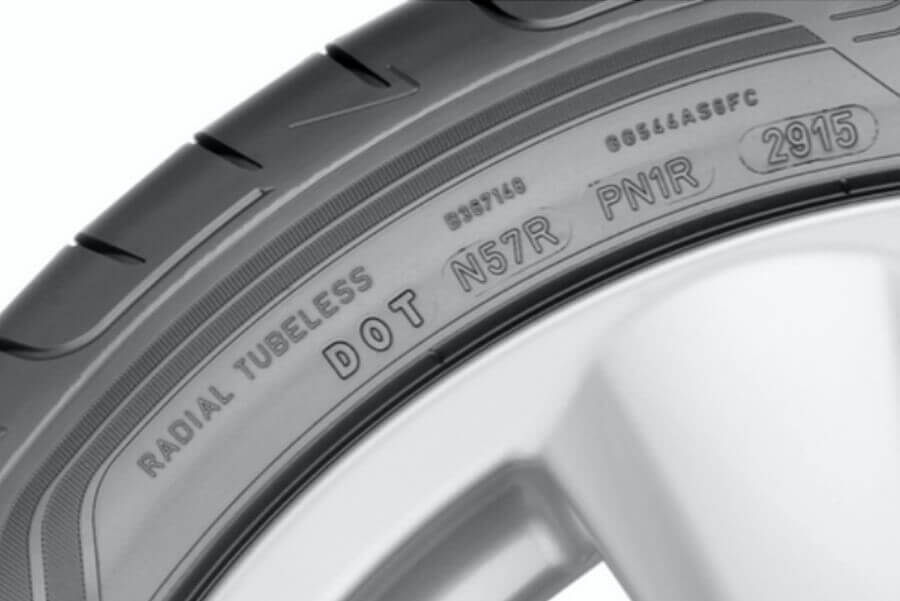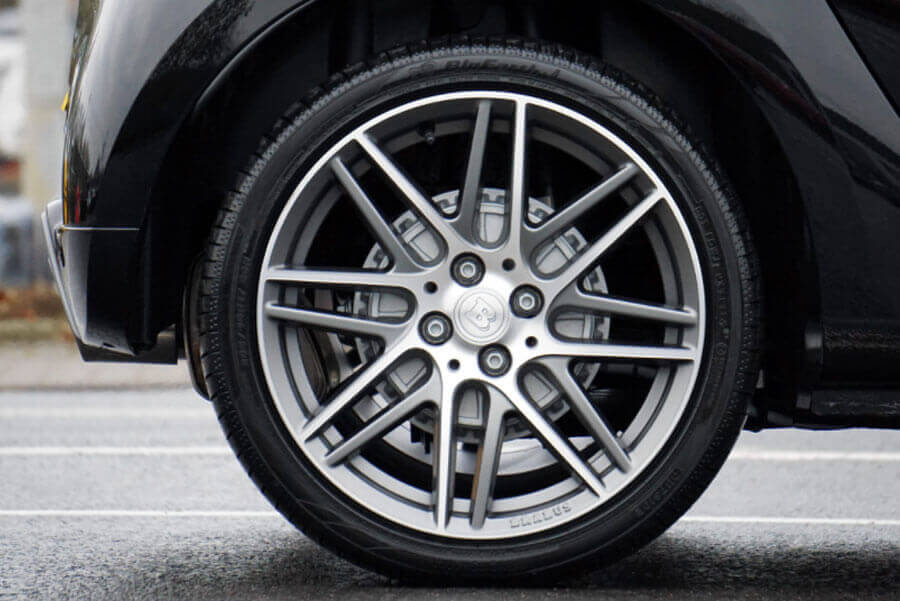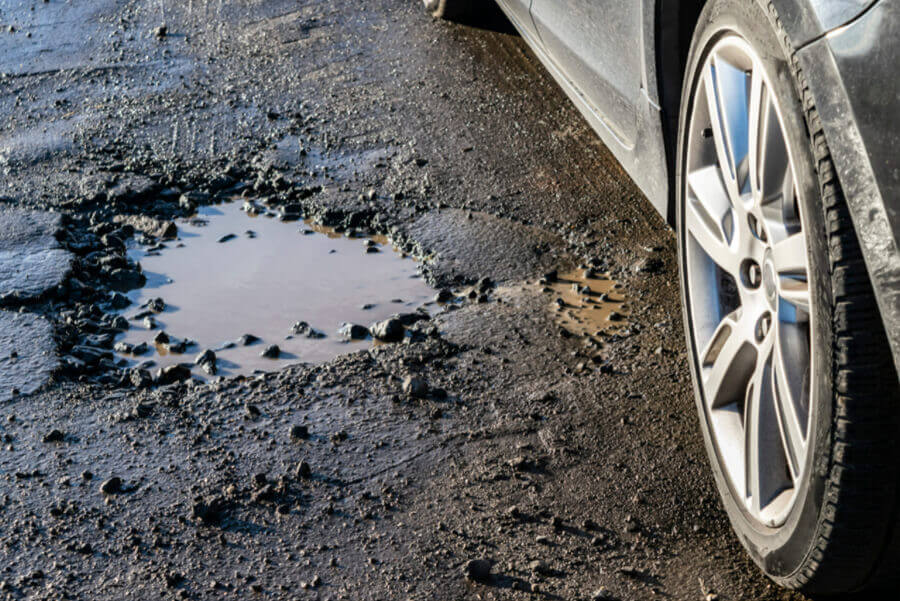When it is time to purchase new winter tires, you will have to weigh the pros and cons of studded tires. There are many models on the market, including studded, studdable and non-studded models, and some manufacturers even offer all of these options for a single model.
With so many options, it can be hard to make a decision. Blackcircles Canada is here to help you make sense of it all by presenting the advantages and disadvantages of studded tires. Also be sure to check out our winter tire buying guide to learn more!

How are studded tires made?
First and foremost, let’s make sure you aren’t confusing studdable and studded tires. Studdable tires have holes that allow you to fit them with studs when you choose, and these are installed by a technician; studded tires are sold with the studs already installed by the manufacturer.
A studded tire is a tire equipped with nails along the tread, which act as studs. The studs are made up of a base and a stem, which fit inside the tire, and a metal tip that protrudes from the tread. The base is larger than the tip to ensure that the nail remains in place.
The nails are usually made of a metal or aluminum alloy. Sometimes they are made of tungsten carbide or hard rubber. The size of the nails will vary from one tire model to another.
The metal tip is normally the only part that can be seen from the outside, as the base and the stem are completely embedded in the tread. For optimal efficiency and to avoid damaging the tires, the nails must be properly installed and completely straight. If you choose studdable tires, we strongly recommend that you have an experienced technician install the studs!
A studded tire will usually cost slightly more, but it is often worth paying a bit extra if it buys you peace of mind. You won’t have to wonder if you chose the right studs or if they were properly installed, which you might do if you install the studs yourself.
Advantages of Studded Tires
After several years of falling popularity, studded tires are back in style and it’s all due to their exceptional performance on ice and snow. Let’s take a look at some of their advantages:
They are very effective on ice
When driving on ice, the studs dig straight into the ice and hold on tight. When you need to turn, brake or accelerate, your vehicle will not skid. Studded tires also greatly reduce your vehicle’s braking distance, maximizing your safety when driving on slippery roads.
Most modern winter tires are designed with special compounds and siping patterns to generate a strong grip, while the studs add that extra crucial bit of traction.
Studded tires also offer excellent stability when driving on snow. The studs help the tire maintain its grip, especially when the grooves are packed tight with snow.
Given the latest developments and technologies in the tire industry, you can also rely on a high-quality non-studded tire to drive safely on snow.


They are perfect for off-road driving
Whether you need to leave town often or live in a rural area, studded tires are always the best option if you drive mostly on icy roads or in deep snow.
When mud, snow and ice are mixed together, and when paved roads are few and far between, you will be happy you equipped your vehicle with studded tires. These tires enhance your safety by improving your vehicle’s performance on difficult roads. All things considered, whether the pros of studded tires outweigh their cons will depend on your lifestyle and your needs.
Disadvantages of Studded Tires
Studded tires are certainly advantageous under certain conditions, but they also present a number of drawbacks.
They are sometimes prohibited
Studded tires are excellent on ice and snow, but they are known to damage surfaces such as asphalt and pavement. In Canada, their use is governed by laws that differ from province to province. Here are the dates during which studded tires are street legal, separated by province:
- Quebec and New Brunswick: October 15 to May 1
- Newfoundland: November 1 to April 30
- Nova Scotia: October 15 to April 30
- Prince Edward Island: October 1 to May 31
- Ontario: October 1 to April 30 in some areas; prohibited in others
- British Columbia and Manitoba: October 1 to April 30
- Alberta, Saskatchewan, Northwest Territories, Nunavut and Yukon: during the winter, no dates specified

Besides establishing these dates, regulations in some provinces also stipulate the number and type of studs that tires must be equipped with. The same is true in the United States. So if you are planning to travel from one region to another, be sure to double-check the laws and requirements of your destination. You will have to respect your own regulations as well as those of your destination.
Visit our website to learn more about studded tires and the regulations in different Canadian provinces.
Also note that studded tires are sometimes banned in indoor parking-lots and in condominiums. If you live in an urban area, you might just find that they are not worth all the extra hassle.

They are more expensive
As you can imagine, the extra work of adding studs to a tire will be reflected in a higher price on your bill. Not only are you billed for the cost of the extra materials, but also for the added labour necessary for their installation.
If you do not really need studded tires, they could become an unnecessary expense. In fact, studded tires usually cost 10-20% more. That being said, if you live in an area where they are necessary, you will always be happy you paid a little more to ensure your safety.
They are noisier
When driving on dry surfaces, the friction of the tires and the studs against the road will be much noisier than with non-studded models. If you drive mostly on roads that are regularly cleaned, you might grow tired of the noise.
More importantly, the added grip means your car needs to work harder, and that extra work will be reflected in higher fuel consumption and a higher bill at the gas station.
They are not suitable for all surfaces
As we have seen, studded tires perform extremely well on ice. However, studs can become a burden when you drive on clean roads.
They struggle on dry or wet roads that have been cleared of snow and ice and deliver worse handling non-studded winter tires, and their braking distances are also longer.
Furthermore, they will wear out faster if you drive when the weather is warmer, and let’s not forget that they can also damage roads
Studded or non-studded tires? That is the question
Driving with studded tires in the city can create a number of issues: there is the noise they generate, the damage they do to the road, and the weaker traction they provide on dry and wet roads. Clearly, they are not the best option for urban dwellers.
So if you live in in the city and rarely venture out, we do not recommend choosing them.
However, if you live in a rural area or if your job requires you to leave the city on a regular basis, studded tires could be exactly what you need. They deliver excellent traction on ice and snow as well as on non-paved trails, so you can drive safely and confidently.
You will also be happy you chose studded tires if you find yourself driving up or down icy slopes, since they allow you to tackle these difficulty roads with confidence.
If you're not sure which option is best for you, you can always consider studdable tires. These allow you to try driving without studs at first and then decide if and when to equip them with studs.

If you decide that you will want to drive with studs, note that the factory-installed studs of studded tires are often of higher quality, although you could have your mechanic stud your tires for cheaper. The choice is yours!
Regardless of the type and model you need, at blackcircles you will always find the tire that’s right for you in our vast selection of studded, studdable and non-studded tires from numerous brands. If you need any extra help, don't hesitate to contact our team of experts!
Get your hands on well-known tires from reputable brands and the lowest prices on the market.






